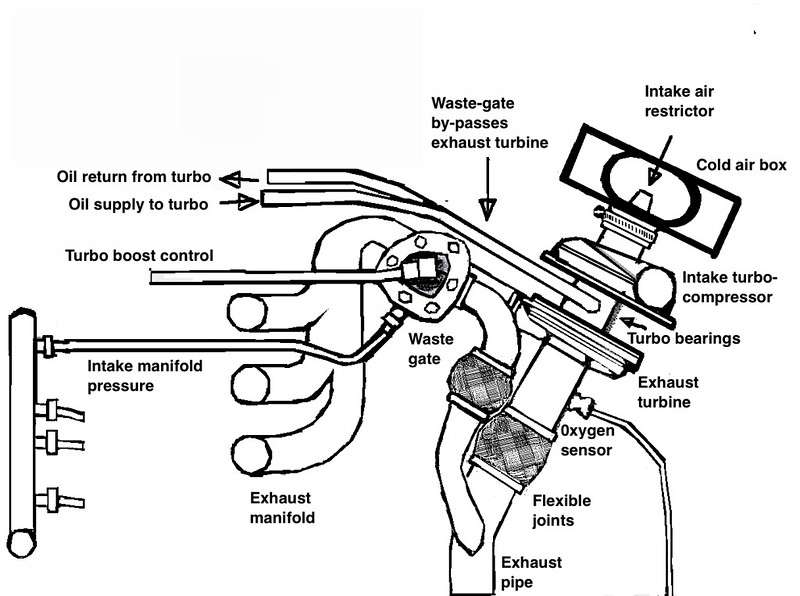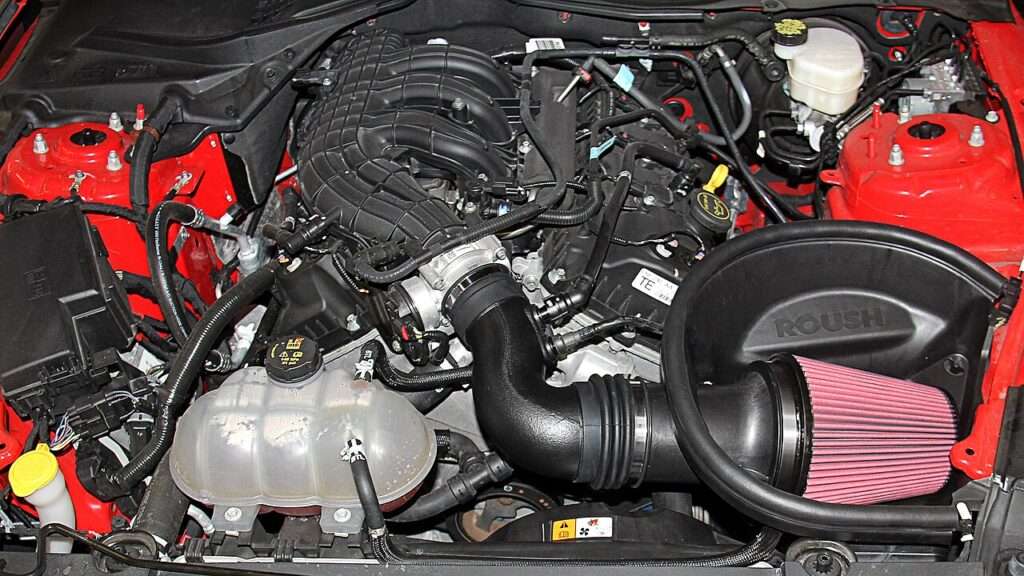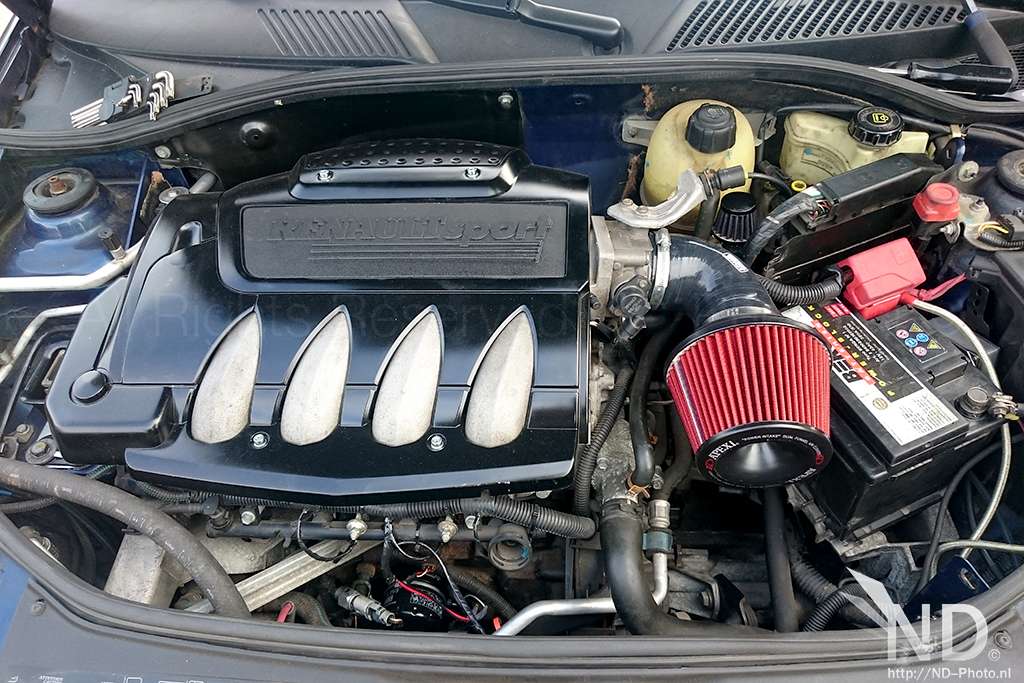What is air intake system? It is responsible for supplying air to your vehicle’s engine, ensuring optimal combustion and power generation. The air intake system works to improve your vehicle’s cruise control or boost its horsepower output.
The car air intake system acts as a gateway for fresh air to enter the internal combustion engine. It ensures that only clean and filtered air reaches the engine while protecting it from debris and contaminants present in the environment. By regulating airflow, this system optimizes throttle response, enhances fuel efficiency, and contributes to overall engine performance.
There are various air intake system options available to suit different driving needs. For example, stock systems designed for everyday vehicles and specialty performance parts like intake snorkels for off-roading adventures or hot engine bay setups for show cars.
Air intake system diagram.

The air intake system diagram provides a visual representation of the components, structure, and flow of an air intake system. It helps us understand how air is directed into the engine and plays a crucial role in optimizing performance.
- Components.
The diagram showcases various components of the air intake system, including the air intake tube, air box, air ducts, and airflow sensors. These elements work together to ensure a continuous airflow from the outside environment to the engine.
- Air flow.
The diagram illustrates how air enters through the intake tube or snorkel and passes through the air box. From there, it travels through the air ducts towards the engine compartment. This controlled airflow ensures that sufficient oxygen reaches the combustion chamber for efficient fuel combustion.
- Air mixture.
By regulating the amount of incoming oxygen, an optimal air-to-fuel mixture is achieved within the engine. This mixture is vital for maintaining proper combustion and maximizing power output while minimizing emissions.
Understanding an air intake system diagram allows us to grasp its functionality and significance in optimizing engine performance. It highlights how this system directs fresh air into the engine while ensuring an appropriate balance of oxygen density.
With this knowledge at hand, we appreciate how modifications or upgrades to specific components like wires or exhaust ports can enhance overall efficiency.
Purpose and function of air intake systems.
Ensuring proper air-to-fuel ratio for combustion, filtering out contaminants from incoming air and enhancing engine power and efficiency are the purposes and functions of air intake systems.
The air intake system is a crucial component of any vehicle’s engine. It serves several important functions to ensure optimal performance and efficiency.
- Ensures proper air-to-fuel ratio for combustion.
The primary purpose of an air intake system is to deliver the right amount of air to the engine, ensuring an ideal air-to-fuel ratio for combustion. This ensures that the engine operates efficiently and produces maximum power.
- Filters out contaminants from incoming air.
Another vital function of the intake system is to filter out any contaminants present in the incoming air. Dust, dirt, pollen, and other particles can be harmful to the engine if they enter along with the air. The intake system prevents these impurities from reaching the combustion chamber, thereby protecting the engine from potential damage.
- Enhances engine power and efficiency.
By delivering clean and properly measured air to the engine, the intake system plays a significant role in enhancing its power output and overall efficiency. A well-designed intake system can optimize airflow, allowing for better combustion and improved fuel economy.
How does a car air intake system work.
Drawing in the outside air through intake ducts or vents, then directing airflow towards the engine’s intake manifold and regulating airflow using throttle body and valves are how a car air intake system works.
The car air intake system plays a crucial role in ensuring that the engine receives an adequate supply of clean air for combustion.
- Draws in outside air.
The air intake system draws in fresh air from the outside environment. This is typically achieved through intake ducts or vents strategically placed on the vehicle’s body.
- Directs airflow.
Once inside, the system channels the incoming air towards the engine’s intake manifold. The manifold is responsible for evenly distributing the air to each cylinder for combustion.
- Regulates airflow.
To maintain optimal performance, the airflow needs to be regulated. This is where components like the throttle body and valves come into play. The throttle body controls the amount of air entering the engine based on driver input, while valves adjust and direct airflow as needed.
By efficiently managing the flow of air, a well-functioning air intake system ensures that an appropriate amount of oxygen reaches the engine, allowing for efficient fuel combustion and power generation.
Main parts of air intake system.
Air filter, mass flow sensor and throttle body are the main component parts of air intake system. The air intake system is a crucial component of an engine, responsible for delivering the necessary oxygen to support combustion. It consists of several main parts that work together to ensure optimal performance.
- Air filter.
The air filter is a vital part of the air intake system as it removes impurities from incoming air before it enters the engine. By preventing dust, dirt, and other particles from reaching the engine, it helps maintain its efficiency and longevity.
- Mass flow sensor.
Another essential component is the mass flow sensor. This sensor measures the amount of incoming air and relays this information to the engine control unit (ECU). The ECU then adjusts fuel injection accordingly to ensure optimal combustion.
- Throttle body.
The throttle body controls the airflow into the engine. It acts as a gateway between the air intake manifold and the engine bay. By adjusting the position of its internal flap or valve, it regulates how much air enters the cylinders, allowing for precise control over power output.
Different types of air intake systems for cars.
Stock or integrated systems, short ram intakes and aftermarket cold air intake options, are the different types of air intake systems available for cars. Each of the different type of air intake system has its pros and cons.
- Stock or integrated systems.
These are the factory-installed standard setups found in most vehicles. They come with a specific type of air intake system already installed. The stock or integrated systems are the standard setups that come with your vehicle from the factory. These systems are designed to meet general performance requirements and may not offer significant enhancements.
- Aftermarket cold air intake options.
Alternatively, you can opt for aftermarket options such as cold air intakes or short ram intakes. Cold air intakes are specifically designed to draw cooler outside air into the engine. By doing so, they increase the amount of oxygen available during combustion, resulting in improved performance. These systems usually feature larger tubing and a cone-shaped filter to maximize airflow.
- Short ram intakes.
Unlike cold air intakes, short ram intakes have shorter tubing that allows for increased airflow. While they may not provide the same cooling benefits as cold air intakes, they can still enhance performance by delivering a higher volume of air to the engine.
On the other hand, short ram intakes provide increased airflow with shorter tubing. While they may not offer the same cooling benefits as cold air intakes, they still deliver a higher volume of air to the engine, enhancing overall performance.
Overview of mass flow sensors in air intake systems.
The mass airflow sensor measures both the volume and density of incoming air. Mass flow sensors and throttle position sensors work together to optimize power output during vehicle acceleration. This data is then sent to the vehicle’s Engine Control Unit (ECU), enabling precise control over fuel injection.
Types of mass flow sensors.
Hot wire sensors, Vane meters, and Karman vortex sensors are the common types of mass flow sensors used in air intake systems.
- Hot wire sensors.
These sensors use a thin wire heated by an electric current. As the airflow increases, more current flows through the wire, allowing for accurate measurement of mass flow.
- Vane meters.
Vane meters utilize a movable flap that is deflected by the incoming air. By measuring the angle of deflection, these sensors can determine the mass flow rate.
- Karman vortex sensors.
These sensors rely on the principle that when air passes an obstruction, it creates vortices known as Karman vortices. The frequency at which these vortices occur can be measured to calculate mass flow.
Each type of sensor has its advantages and may be suitable for different applications depending on factors such as cost, accuracy requirements, and environmental conditions.
Role of engine air filters in air intake systems.
The engine air filter plays a crucial role in the air intake system of modern engines. It prevents dirt, dust, and debris from entering the engine cylinders, ensuring optimal filtration efficiency. Here’s why engine air filters are essential for maintaining engine performance and longevity:
- Improved engine performance.
A clean air filter allows for better airflow into the engine, optimizing the engine combustion process. This leads to improved fuel-air mixture ratio and enhances the overall engine power and efficiency.
- Longevity.
By preventing harmful particles from entering the engine, air filters protect vital components such as the throttle body, fuel injection system, and throttle valve from damage. This helps extend the lifespan of these critical parts and ensures smooth operation over time.
- Regular replacement.
To maintain optimal filtration efficiency, it is important to replace the air filter at recommended intervals. Over time, filters can become clogged with dirt and debris, reducing their effectiveness. Regular replacement guarantees that your engine receives clean air for efficient combustion.
Benefits of cold air intake systems for cars.

Increasing horsepower, enhancing throttle response and acceleration and improving fuel efficiency are some of the benefits of cold air intake systems for cars. Cold air intake systems offer several advantages that can enhance your car’s performance and fuel economy. By delivering cooler, denser air to the engine, these systems provide a range of benefits:
- Increased horsepower.
Cold air intake systems improve horsepower by supplying cool air to the engine. Cooler air is denser, allowing for better combustion and more power output.
- Enhanced throttle response and acceleration.
With a cold air intake system, your car’s throttle response becomes more immediate, resulting in quicker acceleration. The improved airflow allows the engine to breathe easier, enhancing overall performance.
- Improved fuel efficiency.
Under certain driving conditions, cold air intakes can enhance fuel efficiency. The cooler air entering the engine helps optimize the combustion process, leading to better mileage.
Drawbacks of cold air intake systems for cars.
Extra maintenance costs requirements, and the temperature increase in closed camber are some of the drawbacks of cold air intake systems for cars.
- Maintenance costs.
Cold air intake systems may require regular maintenance to ensure optimal performance. Filters need cleaning or replacement periodically to prevent debris from entering the engine.
- Temperature increases in closed camber.
In closed camber environments or stop-and-go traffic situations where little fresh airflow is available, cold air intakes may not provide significant benefits as they rely on external cool air sources.
Despite these considerations, cold air intake systems remain popular among car enthusiasts due to their ability to deliver cooler and denser air for improved performance and fuel economy.

